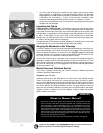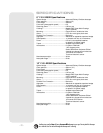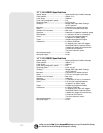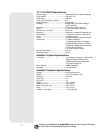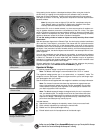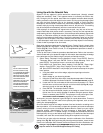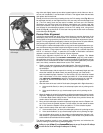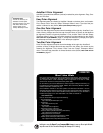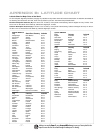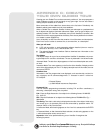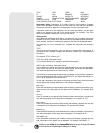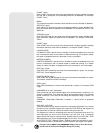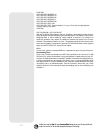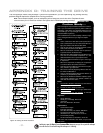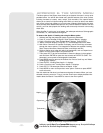
- 56 -
Looking at or near the Sun will cause irreversible damage to your eye. Do not point this tele-
scope at or near the Sun. Do not look through the telescope as it is moving.
AutoStar II Polar Alignment
AutoStar II provides three different (manual) methods for polar alignment: Easy, One-
Star and Two-Star.
Easy Polar Alignment
Two alignment stars are chosen by AutoStar II based on the date, time, and location.
First, choose "Polar" from the "Setup: Telescope: Mount" menu. The rest of the pro-
cedure is identical to the (Alt/Az)
EASY (TWO-STAR) ALIGN, page 37.
One-Star Polar Alignment
Polar One-Star Alignment requires some knowledge of the night sky. AutoStar II pro-
vides a library of bright stars and one star from this library is chosen by the observer
for alignment. Polaris is chosen by AutoStar II. First, choose "Polar" from the "Setup:
Telescope: Mount" menu. The rest of the procedure is almost identical to the (Alt/Az)
ONE STAR ALT/AZ ALIGNMENT, page 37, except that AutoStar II prompts you to point
the telescope at Polaris and center it in the telescope eyepiece.
Two-Star Polar Alignment
Polar Two-Star Alignment requires some knowledge of the night sky. AutoStar II
provides a library of bright stars and two stars from this library are chosen by the
observer for alignment. First, choose "Polar" from the "Setup: Telescope: Mount"
menu. The rest of the procedure is almost identical to the (Alt/Az) TWO STAR ALT/AZ
ALIGNMENT
, page 37.
Important Note:
In order to select any of
AutoStar II's three polar
alignment options, you must
first select "Polar" in the
"Mount" option of the
"Setup: Telescope" menu.
Surf the Web
One of the most exciting resources for astronomy is the internet. The internet is full
of websites with new images, discoveries, and the latest astronomical information.
For example
: When comet Hale-Bopp made its approach to our Sun in 1998,
astronomers around the world posted new photos daily.
On the internet, you can find websites for almost any topic relating to astronomy. Try
the following key word searches: NASA, Hubble, HST, astronomy, Messier, satellite,
nebula, black hole, variable stars, etc.
Check Meade’s website for the latest product and technical information. You can
download the latest software revisions, links to other astronomical sites, coordinates
of celestial objects and the latest satellite tracking information for your AutoStar II
handset. See page 31 for more information. You’ll find our website at:
www.meade.com/
Here are some other sites you might find interesting:
•
Sky & Telescope
:
http://www.SkyandTelescope.com
•
Astronomy
:
http://www.astronomy.com
• The Starfield:
http://users.nac.net/gburke/
• Astronomy Picture of the Day:
http://antwrp.gsfc.nasa.goc/apod
• Heavens Above (satellite observing information):
http://www.heavens-above.com
• Photographic Atlas of the Moon:
http://www.lpi.ursa.edu/research/lunar_orbiter
• Hubble Space Telescope Public Pictures
http://opposite.stsci.edu/pubinfo/pictures.html
LX200R TIPS



